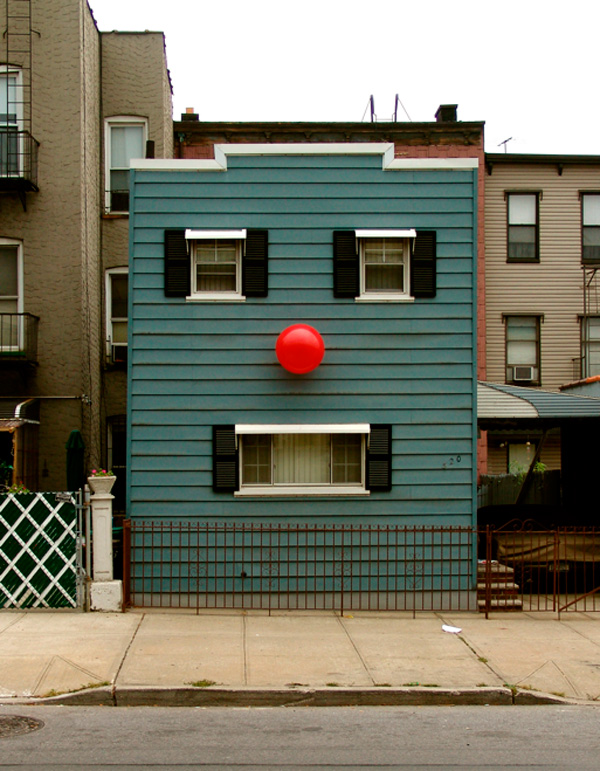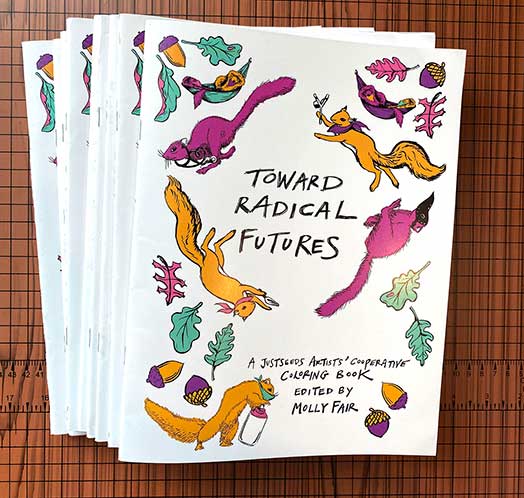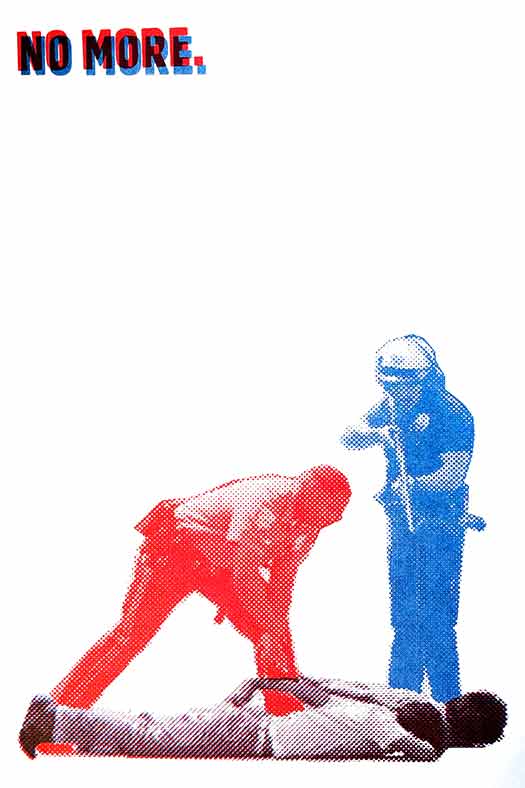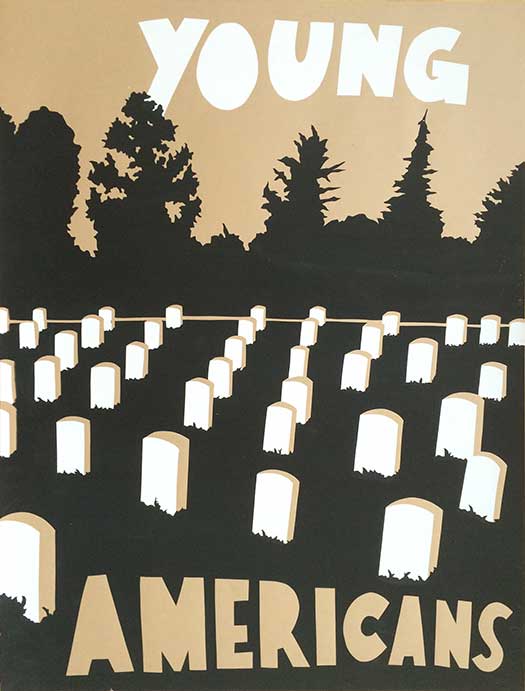Guest blogger Ali Gitlow sent us this great new interview with NYC street artist Dan Witz, check it out!:
Brooklyn-based artist Dan Witz has been contributing his unique brand of witty realism to NYC’s street art scene since before an easily identifiable ‘scene’ existed. Through his in-depth serial projects, Witz has made poignant commentary on the crumbling Lower East Side of the early ‘90s, September 11th, the gentrification of Manhattan and, subsequently, Brooklyn. Constantly engaged with the architectural fiber of the city, he has embedded poetry into the asphalt, hand-painted hummingbirds onto walls and installed real gloves clinging to drainage grates, making it seem a person is trapped inside, desperately clawing to reach the light of day. Witz’s work is not always so serious — some of his most engaging pieces are his pranks, for which he has affixed papier-mâché noses to building facades and installed renegade street signs reading ‘Don’t even think about thinking about parking here.’

On November 5th, Witz’s solo show entitled Dark Doings will open at the Carmichael Gallery in Los Angeles. We asked him a few questions in anticipation:
Ali Gitlow: Why do you usually work in series’ on the street?
Dan Witz: I guess that’s my way of keeping things under control. Even though I’ve been at this for years, I never get used to how chaotic and unpredictable it all is. Every project I do starts one way, with what I think it’s going to look like, then one thing leads to another, all sorts of accidents happen and invariably I end up with something totally unexpected. To be honest, the lack of control can be kind of nerve wracking. I mean it’s exciting, but it’s like my life is lived in a state of constant emergency.
This year I started with what I thought was going to be the last of my Kilroy variations, with the hands in classic ‘Kilroy Was Here’ positions in the vents on the Ugly New Buildings. After about a month of working that, so many cool new possibilities emerged that the original Kilroy concept became just the overture, the prelude to a much larger Ugly New Buildings project. By the end of the summer things got so out of control it morphed into my recent project, “In Plain View”. I’m not complaining, I’m glad I’ve hit such a fertile vein, but I need some kind of organizational framework or it’d just turn into complete insanity.
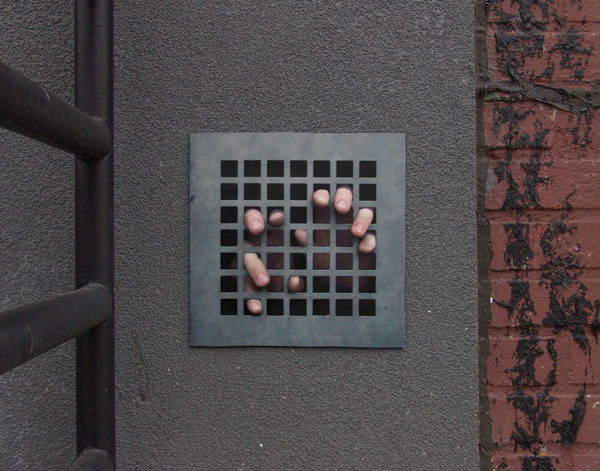
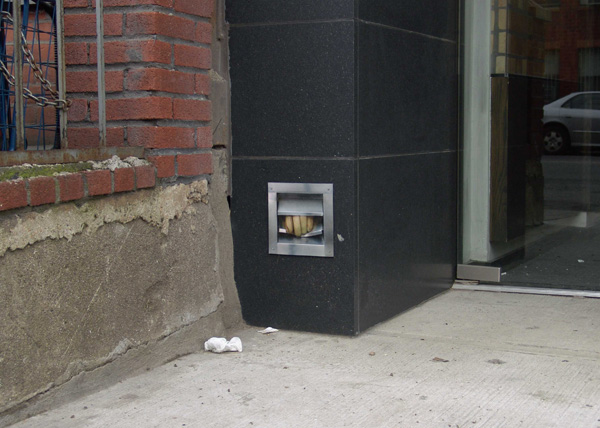
AG: How did you decide to paint your hummingbirds in the street in the late 70s? Were you inspired by graffiti? Were you at all concerned with advancing your fine art career?
DW: I was an art school punk: terminally dissatisfied, full of hubris, extreme. Opinions were my identity. To me, the word ‘career’ next to the word ‘artist’ automatically meant selling out. To be fair, even if I wanted to sell out back then, nobody was buying. You had to be in your forties and preferably white and know the right people to get a show in most galleries.
The real truth is I started painting on the street because in the summer I like being outdoors. I was dimly aware of how strange an art move this was, but at the time I was too preoccupied with how intense (and dangerous) the whole painting process was and how much fun I was having to think it through too much.
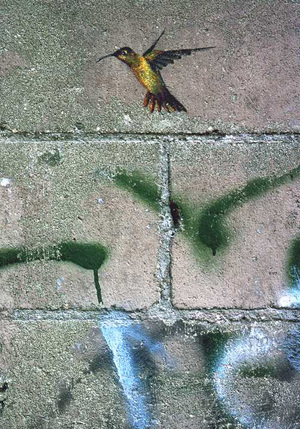
Those first bombed subway trains really cracked me open and got me thinking though. True, by 1978, graffiti had already become an art movement: there were stars and hierarchies and rules, but it was still mind blowing and illegal and I loved it. These artists definitely inspired me to work outdoors and be in people’s faces. Stylistically though, I’ve always been a realist, my pull has always been towards representational painting. I called my tiny, anonymous hyper-real hummingbirds an ‘anti-tag’.
AG: It’s awesome you photographed your street work right from the beginning. How do you see the relationship between street art and photography?
DW: It really depends on the street art. Like most street artists, I keep the photos on the down-low aesthetically so as not to interfere with the documentation. But sometimes, with some of my projects, I can see how the photograph itself can be an art object. Unfortunately I seem to be pretty much the only one who thinks this. It’d be nice to sell the photos to support the work but that hasn’t really worked out.
AG: How do you think your acrylic street pieces changed once you began incorporating vinyl stickers into the mix?
DW: I started using stickers in the early ‘90s, when I began using Photoshop. At the time, for me, the new digital techniques were a form of sampling, which with the kind of music I was listening to really made sense. The new technology really freed me, especially financially. Up until then, my chief criteria for what I could do was if I could afford it. Which usually meant I couldn’t do what I wanted to.
AG: How important is placement to your work? Do you scout locations beforehand, or do you make on-the-spot decisions?
DW: Again, it depends on the project. Some things need to be in exact locations; others I have no idea, I just go out and let it happen. Usually, I use my motorcycle for installations which gives me a freedom and flexibility that’s been a great advantage. Good for fast getaways too. But when the stuff is actually going up it’s always very in the moment, always an improvisation.
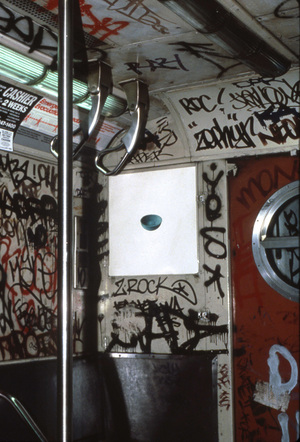
AG: The contrast between super-bombed train interiors at the start of the ‘80s and the minimalist imagery you placed within them is really staggering. How did you feel about the proliferation of graffiti at the time?
DW: I’ve always had the greatest respect for graffiti writers. Ever since the beginning I’ve been super conscious of never stepping on theirs or any other street artists’ toes. I’m glad to say it’s mostly been reciprocated. The early ‘80s subway pieces you’re referring to were definitely me riffing on the crazy noise of the tagging, but it wasn’t until the mid-‘90s that I started actually interacting with the graffiti — with the way the layers of tagging made the walls so vibrant and deeply spatial.
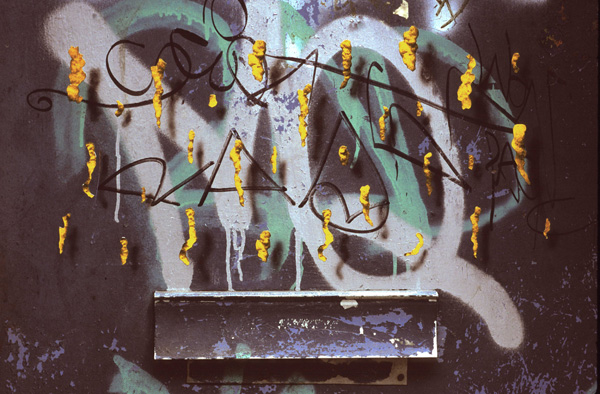
AG: You did a series in 1980 where you stuck some colorful toys in dog shit on the road. How did you come up with this idea?
DW: All along, I’ve had a side practice of pranks. Mostly they’re one-offs, occasionally some turn into multiples. It was a long time ago but I’m pretty sure I did that whole series in one day.
I came up mostly through the music scene of the early ‘80s in downtown New York. For most of my twenties I was in bands, and one of the most serious rules of that world is that rock and roll should never take itself too seriously.
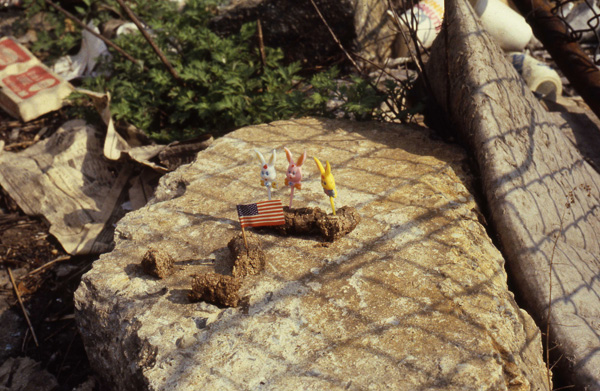
AG: You began the Hoodies project in the mid ‘90s as a reaction to lots of folks getting addicted to heroin. Why did you decide to put up stickers of similar imagery in 2005?
DW: I was tagging my new neighborhood in Williamsburg, Brooklyn. This was just when the whole demolition and gentrification thing was getting started out here. The original hoody character was about a lot more than drugs. It’s kind of a danger sign, an archetype (for me) of disenfranchisement and loss.
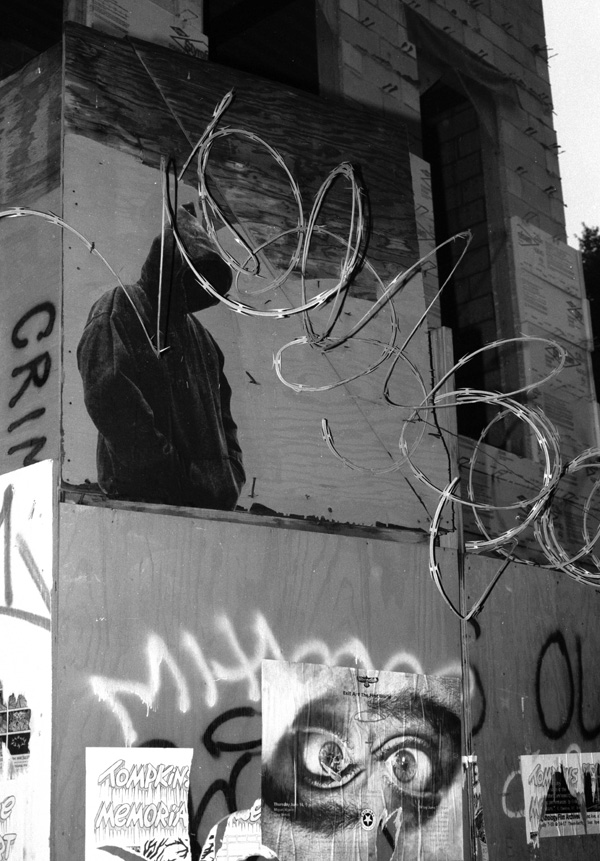
AG: Have you ever had a bad run-in with the cops?
DW: Yes. Never been arrested though.
AG: How do you view the relationship between your street and gallery work? Has this changed over the years?
DW: Each side has benefitted from the other. Some technical innovations, like using digital media to make stickers, I’ve adapted for studio use. Most of my paintings now have digital photos as underpaintings. I’ll admit I have a fantasy that one day it’ll all be the same: I’ll have one uncomplicated means of production (in a huge clean studio with mute leotarded assistants), but knowing me, that wouldn’t work out. I’d get bored.
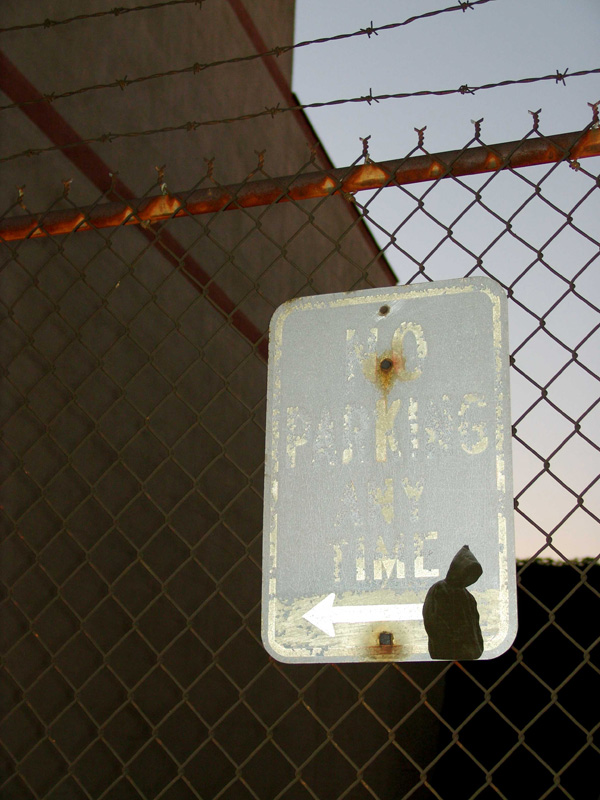
AG: Tell me a bit about the series of paintings you did depicting women with cell phones.
DW: It’s so beautiful. Every time I see someone in a dark place looking at their cell phone it takes my breath away. For years my main subject to paint was people. Then, a few years ago after 9/11, I did some shrine paintings (and street art) which got me interested in techniques of painting light. That became the main subject for my easel paintings. The cell phone people are a combination.
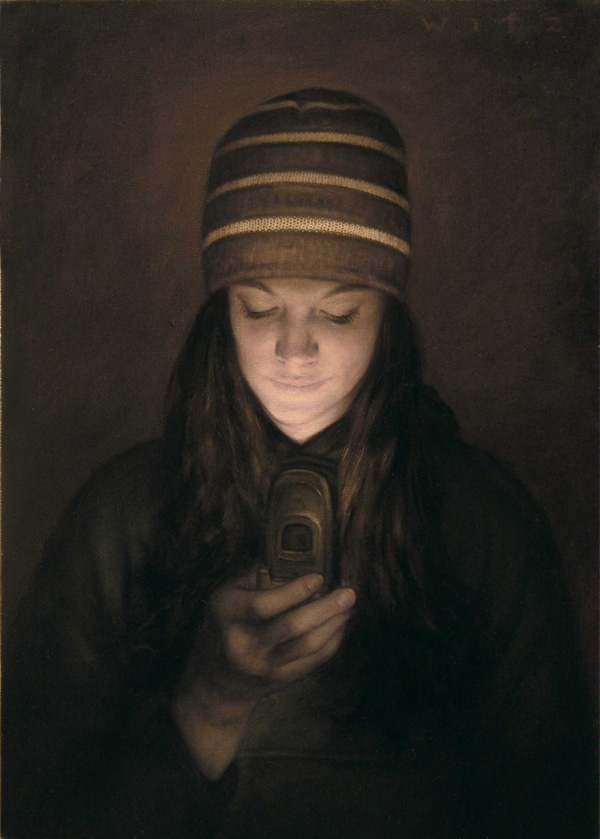

AG: Gentrification and the creation of massive, homogeneous buildings has been a major theme you’ve tackled. How do you see the state of affairs right now?
DW: I’m not against gentrification. If you live in New York City that would be like saying you’re against other unstoppable forces of urban nature, like noise or bad smells. But, that said, these new corporate condo towers they’ve plopped down in my working class Brooklyn neighborhood are so arrogantly out of step with their surroundings that I had to do something. And I have to say I’m loving the new surfaces, and, weirdly, because it’s totally new to me, I’m really enjoying working with the clean lines and symmetry. The truth is, for better or worse, I’m glad this place keeps changing. It keeps me changing — and awake.
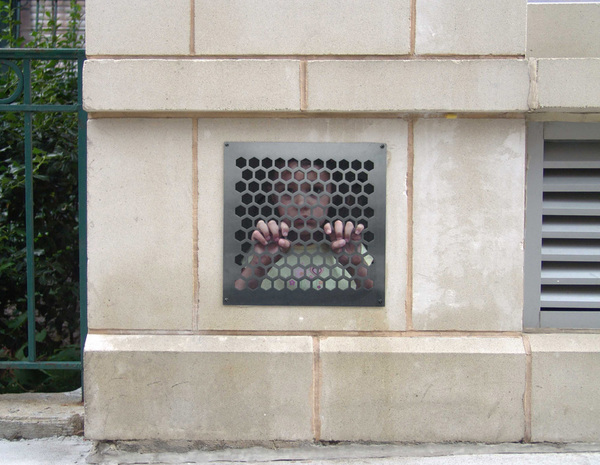
AG: Do you ever listen to music while painting indoors? What about when putting up work outdoors?
DW: Yeah, I listen to music while I work in the studio. My favorite new form of music is Shuffle. It’s all I can listen to anymore. I can’t imagine hearing two songs in a row from the same artist, much less the same era or genre. Although, I have to say, I recently saw Animal Collective for like the fifth time. They are unbelievable.
While working outside, I have to be so in touch with my surroundings, so focused, that music or even conversation would be a disaster. I don’t even really like friends along watching me (or photographing — which is why there’s next to no pictures of me doing street art).
AG: Are you still into the punk scene at all?
DW: No. But I seem to know a few Suicide Girls… and a lot of my friends have been through Dharma Punx. Tattooed miscreant Buddhists. The music though, no.

AG: What cities have you hit besides New York?
DW: I’ve put up work in London, Paris, Copenhagen, L.A., San Francisco, Amsterdam, and a few other places.
I usually work wherever I go (or, preferably, am brought). I recently made a road trip south and did the first of my In Plain View pieces up and down the East Coast. I installed these occupied vents in high traffic locations like airports and bus terminals; I put them up in plain view, in places where hundreds of people a day pass by. My hope is that absolutely no one sees them. That’s my goal. To have something right out there in plain view that no one will see.
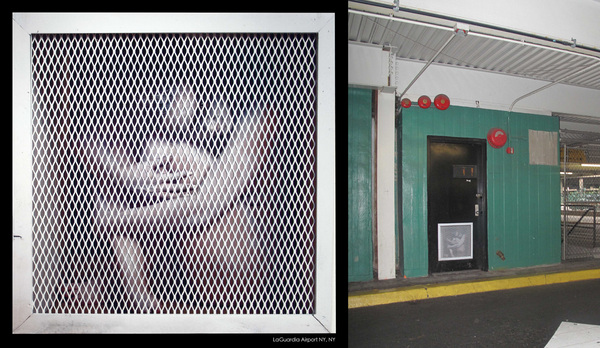
Bonus flic!:
